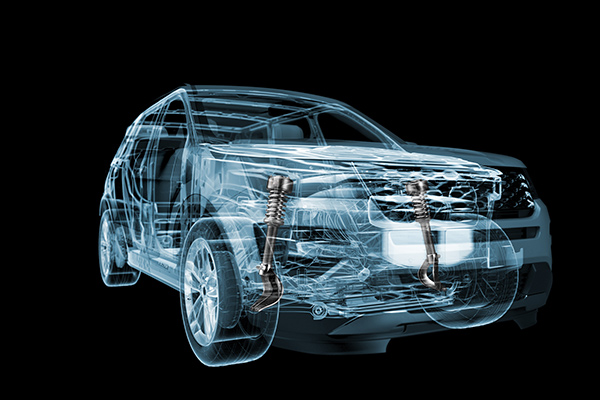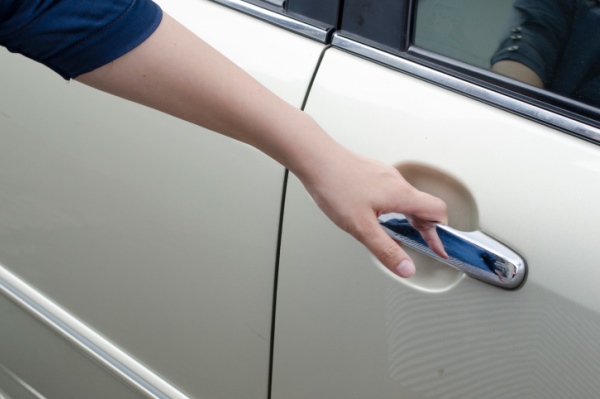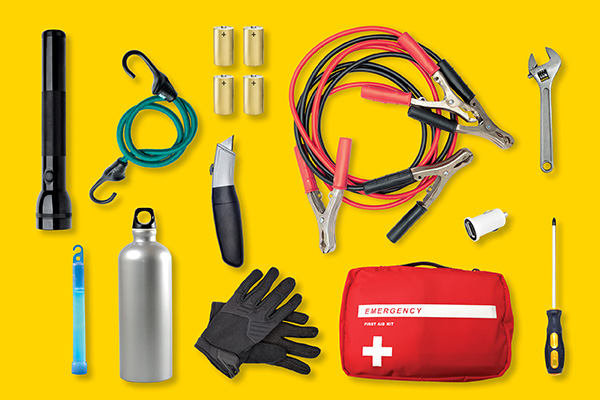The alternator is perhaps the most underappreciated part of your car.
The battery often gets all the credit for keeping the electricity running. But it’s the unheralded alternator that serves as the car’s generator, powering some of your vehicle’s most vital features—including the headlights, the heating and cooling systems, and even the battery itself. In fact, nothing in your vehicle that uses electricity would function properly if it weren’t for this trusty component.
The alternator consists of two main pieces—a stator and a rotor—and is driven by the serpentine belt. Applied voltage creates a magnetic field in the rotor. As the rotor spins inside the stator, that moving field creates induced voltage in the stator’s windings, and the voltage charges your battery and powers all the electric circuits, says Timothy Hatcher, Director of Technical Operations for the Automotive Maintenance and Repair Association.
These moving parts inside the alternator are put through the ringer every time you turn the key to start your car, and sometimes they break down. Here’s how to know if you may have an alternator problem—and what to do about it.
Warning Signs Of A Bad Alternator
Because of the alternator’s importance, it’s essential to watch for signs that it may be going bad, in order to avoid a potential breakdown. According to Hatcher, there are two main problems that can occur with the alternator: Either it undercharges or it overcharges itself.
Symptoms of an undercharging or no-output alternator are usually pretty obvious:
- You see a message or warning light, such as a battery light on your dashboard, indicating an issue with the charging system.
- You notice that your dashboard lights are dimming, or your headlights run brighter when you accelerate but then dim when you come to a stop.
- Your battery dies when the car is parked.
- The car doesn’t even attempt to start or “turn over.”
Overcharging happens when an alternator shorts internally and puts out too much voltage. Here are some symptoms in this case:
- If your car’s dash comes equipped with a voltmeter, you notice it showing an overly high voltage: 15 or more volts.
- Your lights can be especially bright when your engine speed increases (they just won’t dim, as they can do with undercharging).
- You hear a loud grinding noise from under the hood. Sometimes heat or dirt can cause wear and eventual breakdown of the small bearings, or bushings, that let the rotor spin smoothly inside the stator. The resulting sound will tell you immediately that something is wrong.
What To Do If Your Alternator’s Bad
If you suspect an alternator problem, the first step is to check the serpentine belt. If it’s worn or loose, you may hear a squealing noise when you first start the car, and the alternator won’t operate properly, even though the alternator itself may be fine. A mechanic can easily replace the belt.
You also want to check the battery. Because the battery works with the alternator as part of the car’s charging system, it’s common to misdiagnose a bad alternator as a battery issue. Here’s one way to make an educated guess: If you know you didn’t leave a light on and you’re able to recharge the battery, it could be a sign that the battery is fine and the alternator is the culprit. Have a service professional test your charging system so you know for sure which one is faulty.
Most important, says Hatcher, if you think there might be a problem, don’t wait to get it checked out. A faulty alternator can quickly deplete and shorten the lifespan of a perfectly good battery. The reverse is also true: A bad battery can put a greater charging demand on an alternator than it should, which can wear out the alternator. If one of those two parts fails, it’s not uncommon to have to replace them both.
“And you know what that means,” says Hatcher. “A bigger repair bill.”
Another way to protect your car? Add mechanical breakdown insurance to your auto insurance policy. Get a quote now on geico.com.
Read More: Replacing the alternator is best left to a mechanic, but here are five car maintenance tasks you can do yourself.
By Rod O’Connor










Bryan says,
I turn the key and the dash lights dim then go out .won’t crank
Alejandro cruz says,
Very helpful thanks
Christina Thomson says,
What are the signs of needing new shock absorbers. Thank you